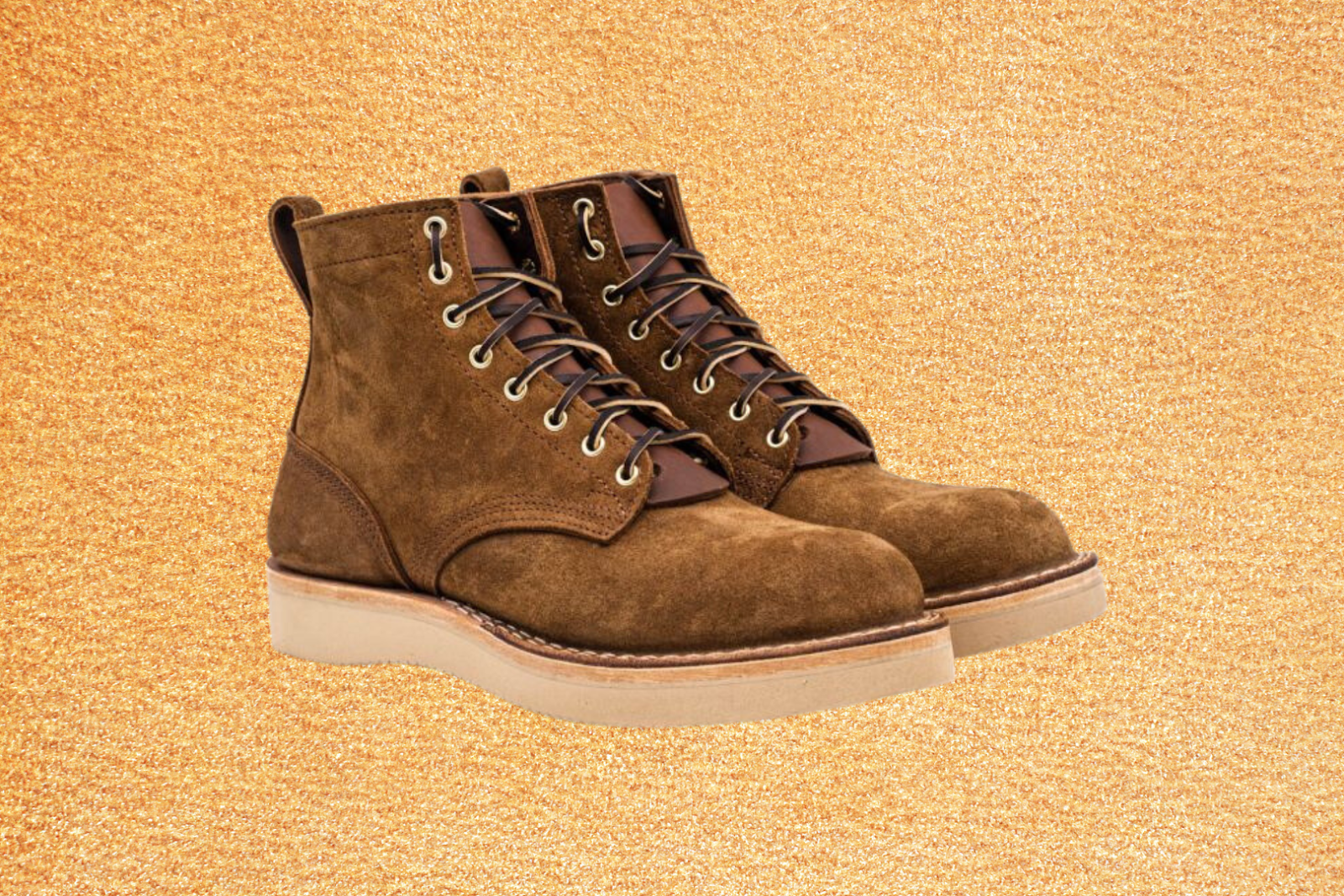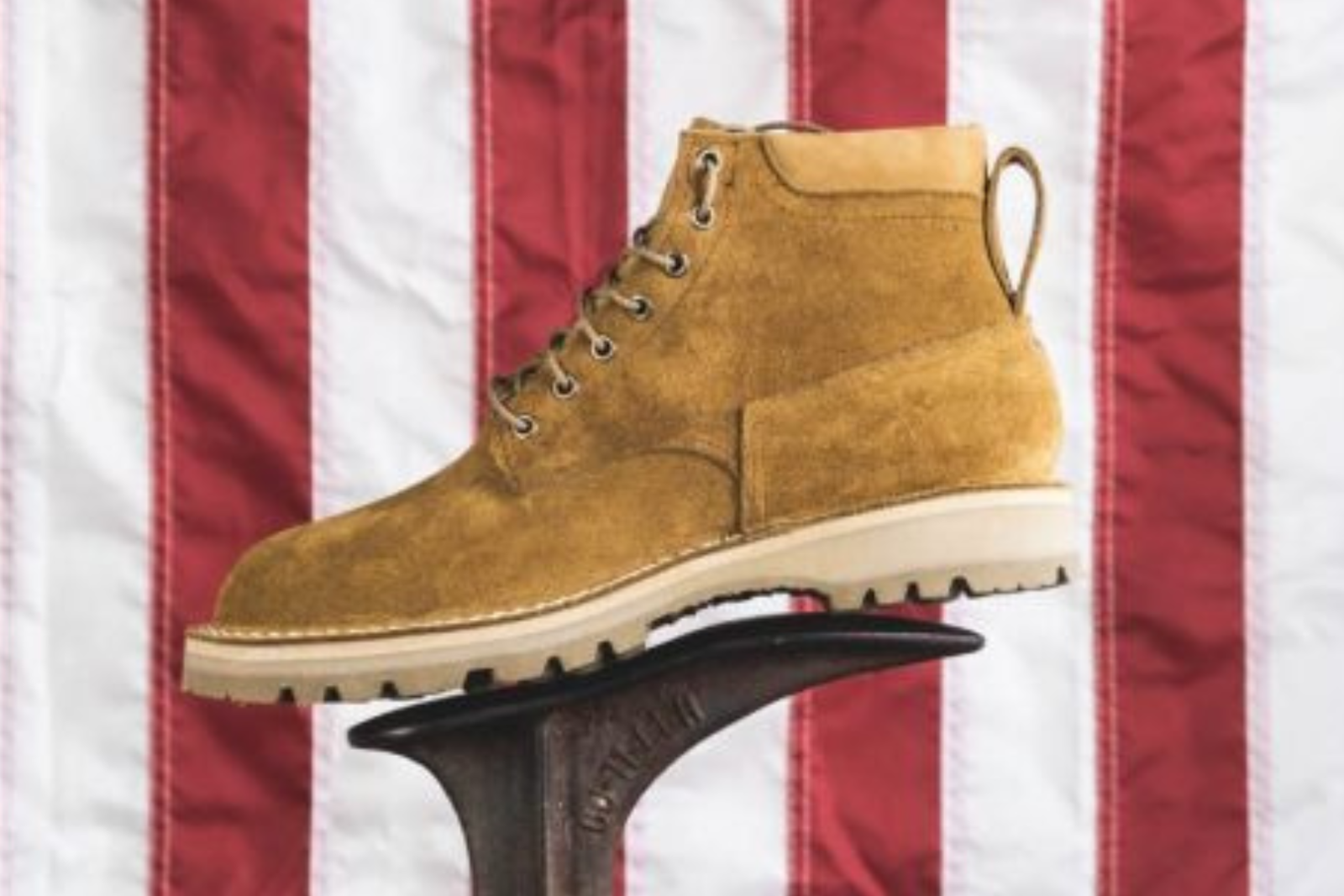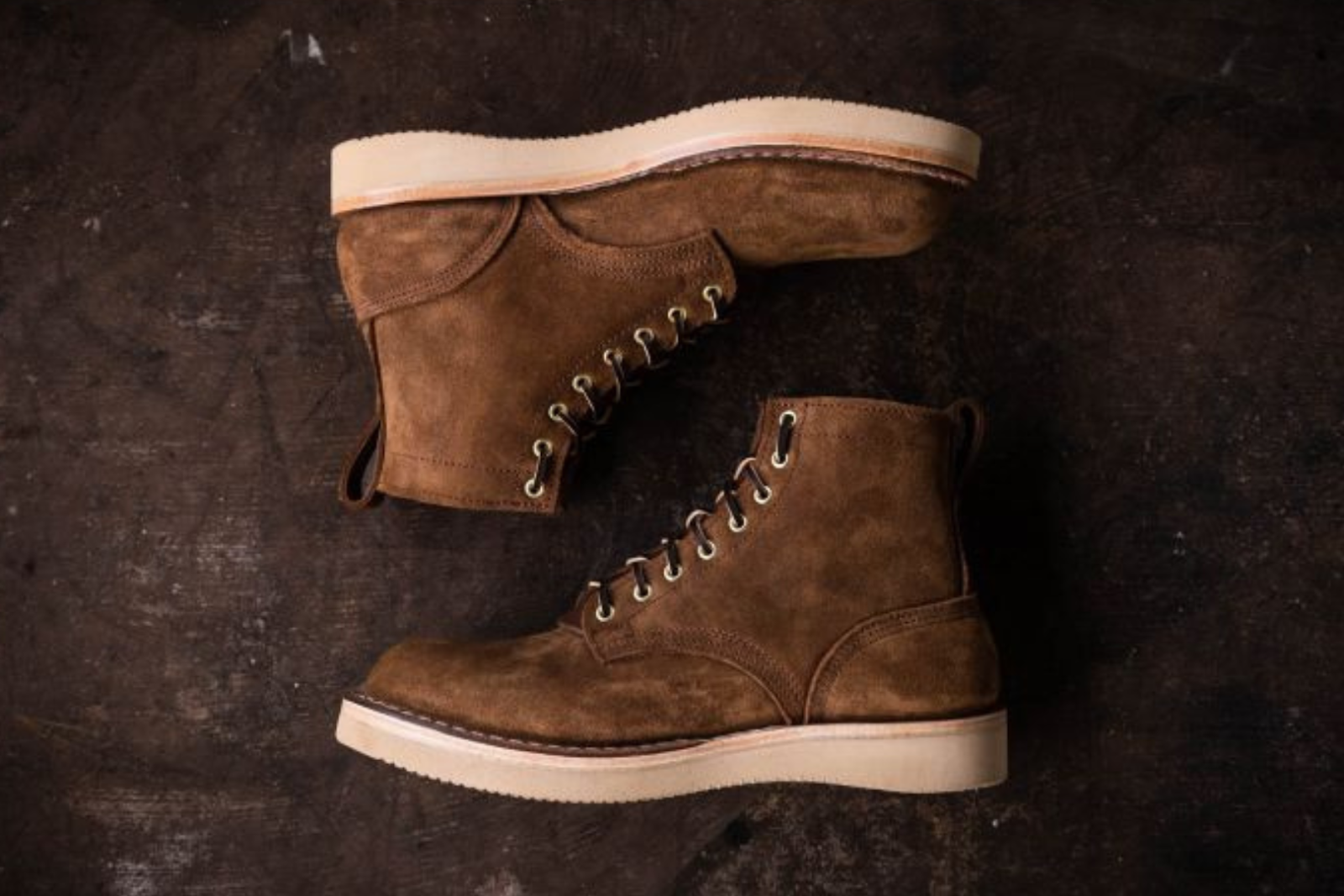According to the Bureau of Labor Statistics, work-related foot and ankle injuries are a significant concern in the US, with more than 48,000 such incidents occurring annually.1 To combat this issue, it's important to find the right work boots that not only provide safety but also ensure comfort throughout the workday.
One comfort feature that often gets overlooked in work boots is breathability. However, no one wants to feel their feet suffocating in uncomfortable, sweaty footwear throughout the workday.
Join us as we dive deep into the world of breathable work boots, exploring what they are, how they work, their benefits, and tips for maintaining their breathability.
Curious about who we are? Check out our welcome page to learn more about us or see our history. You can also skip ahead and browse our belt collection or best-selling boots!
What Are Breathable Work Boots?
Breathable work boots are a type of footwear designed to allow air circulation, preventing excessive heat and moisture buildup inside the boots. These boots are crafted using materials and technologies that promote ventilation and keep the feet feeling comfortable even during extended periods of wear.
The primary goal of breathable work boots is to combat the common issue of sweat accumulation, which causes discomfort and can lead to foot odor, blisters, and other foot-related problems.

Upgrade Your Boot Game With Nicks Boots!Discover the exceptional craftsmanship and timeless durability of our high-quality leather work boots. Each pair represents the culmination of years of expertise and attention to detail, ensuring unparalleled quality and performance.
Whether working in hot and humid conditions or simply valuing all-day comfort, Nicks Boots has got you covered. Shop our collection of high-quality leather work boots today and enjoy a workday free from sweaty feet and discomfort. |
How Do Breathable Work Boots Work?
Breathable work boots employ innovative design elements and materials to enhance airflow and moisture management, ensuring optimal comfort and foot health in demanding work environments.
These boots feature breathable upper materials (for example, perforated leather), which allow air to enter the shoe and heat to escape. Some boots also feature moisture-wicking linings or insoles that help absorb and evaporate sweat. These combined features create a ventilation system that keeps your feet dry and comfortable.
Benefits Of Breathable Work Boots
Breathable work boots offer a range of benefits that contribute to the overall comfort, health, and productivity of individuals in various work environments. Let's explore some of the key advantages of wearing breathable work boots:
Moisture Control
Breathable work boots are designed with materials that allow air to circulate inside, preventing sweat and moisture buildup. The breathable fabrics and ventilation systems in these boots help to wick away perspiration and keep feet dry, even during long hours of strenuous work.
Temperature Regulation
In hot weather conditions, the ventilation in these boots helps dissipate heat, preventing feet from becoming overly sweaty and uncomfortable. Conversely, during colder weather, the boots' breathability allows excess heat to escape, preventing feet from feeling too hot and stuffy. This temperature regulation enhances comfort and helps workers remain focused and productive throughout their tasks.
Improved Foot Health
Breathable work boots promote better foot health by reducing the likelihood of common foot problems such as athlete's foot, fungal infections, and unpleasant odors. The enhanced airflow and moisture control prevent the growth of bacteria and fungi, creating a healthier environment for the feet. Additionally, the breathability of these boots minimizes the risk of blisters, chafing, and skin irritations, ensuring that workers can perform their duties without discomfort or pain.
Tips For Maintaining The Breathability Of Work Boots
To maintain the breathability and extend the lifespan of your work boots, consider the following tips:
Cleaning
Cleaning your work boots regularly is essential to preserve their breathability. After a long day of work, make sure to remove any excess dirt, mud, or debris from the surface of the boots. Use a soft brush or damp cloth to wipe away the dirt gently. Avoid using harsh chemicals or abrasive cleaners, as they can damage the materials and hinder breathability.
Check out our boot care products for gentle and effective cleaning options specifically designed for your work boots.
Drying
After each use, allow your boots to air dry naturally. Avoid placing them near direct heat sources, as excessive heat can compromise the breathability and integrity of the materials.
Rotation
Alternate between at least two pairs of work boots, allowing each to rest and air out between uses. This rotation helps to prevent moisture buildup and allows the boots to fully dry out, reducing the risk of odor and fungal growth. Additionally, rotating your boots can help distribute the wear and tear more evenly, extending their overall lifespan.
Proper Storage
Store your work boots in a cool, dry place when not in use. Avoid keeping them in damp or humid environments, as this can promote mold or mildew growth, obstructing the boots' breathability.
Do Breathable Shoes Need Socks?
While breathable shoes are designed to enhance airflow and prevent moisture buildup, wearing socks is still recommended. Socks provide additional protection and help absorb sweat, keeping your feet drier and reducing the friction that can lead to blisters.
Opt for high-quality work boot socks made from breathable materials to complement the breathability of your work boots.
What Are The Alternatives To Breathable Work Boots?
There are several alternatives to breathable work boots that individuals can consider depending on their specific needs and work environment. These alternatives include:
Safety Shoes With Ventilation
Some safety shoe models incorporate ventilation features such as perforations while maintaining the required safety standards. Look for options that prioritize breathability without compromising on protection.
Work Sandals
Work sandals are an excellent alternative for individuals working in warm environments or those who require maximum airflow around their feet. These sandals typically have protective toe caps and sturdy soles to ensure safety while allowing ample breathability.
Moisture-Wicking Insoles
As the name suggests, moisture-wicking insoles are designed to absorb and draw moisture away from the feet, keeping them dry and comfortable. These insoles can be inserted into regular work boots to enhance breathability and reduce sweat buildup.
Things To Consider When Choosing The Best Breathable Work Boots
Breathable work boots are a valuable investment for individuals prioritizing comfort and foot health in their work environments. When choosing the best boots for your needs, consider the following factors:
Fit: Ensuring a proper fit is crucial for comfort and functionality. Look for work boots that offer ample room for your toes, secure heel support, and a snug fit around the instep.
Material: The choice of materials used in the construction of work boots can impact breathability. Opt for breathable materials like perforated leather. These materials allow air to circulate, preventing excessive sweating and odor buildup.
Safety Features: Don't compromise safety for breathability. Ensure that the work boots you choose meet the necessary safety standards for your workplace. Look for features like protective toe caps, slip-resistant outsoles, and electrical hazard protection, depending on your specific job requirements.
Comfort And Cushioning: Along with breathability, consider the overall comfort and cushioning provided by the work boots. Look for boots with adequate arch support and shock-absorbing midsoles to reduce fatigue during long work hours.
Looking for high-quality breathable work boots that tick all these boxes? Check out Nicks Boots today! Crafted with precision and attention to detail, all our boots are designed to provide exceptional comfort, durability, and breathability. Plus, we offer a wide range of styles and sizes to cater to different preferences and needs.
So don't compromise on safety and comfort - visit our shop today to find the perfect pair of breathable work boots for your workplace needs!

Final Thoughts On Breathable Work Boots
Breathable work boots are a game-changer for individuals who value comfort and foot health in their work environments. By allowing air circulation and preventing excessive sweat and moisture buildup, these boots help workers stay focused, motivated, and comfortable throughout their tasks. This, in turn, contributes to improved productivity and overall job satisfaction, making these special boots a worthy investment!
Want to have more thought-provoking insights? Explore these featured articles:
- What To Consider When Choosing The Best Insole For Your Work Boots
- Get In On The Trend: Why Square-Toe Boots Are All The Rage
- The Essential Gear: Firefighting Boots And Their Must-Have Features
Frequently Asked Questions About Breathable Work Boots
Can I use breathable work boots for outdoor activities and leisure?
Absolutely! Breathable work boots are versatile and can be worn for various activities beyond work. They provide the same benefits of comfort and breathability, making them suitable for outdoor adventures, hiking, or any other leisure activities that require sturdy and comfortable footwear.
Are breathable work boots more expensive than regular work boots?
The price of breathable work boots can vary depending on the brand, materials used, and additional features. In some instances, breathable work boots may be slightly more expensive than regular work boots due to the advanced technology and materials used to enhance breathability. However, it's important to note that the price difference may not be significant, and the long-term benefits of breathability, such as increased comfort and foot health, often outweigh the initial investment.
Can I use waterproofing sprays on breathable work boots?
Yes, you can use waterproofing sprays on breathable work boots. While breathable work boots are designed to allow moisture and heat to escape, applying a waterproofing spray can enhance their water resistance without compromising their breathability.
Can I customize or personalize my breathable work boots?
Yes, many brands offer customization options where you can choose different colors, materials, and even add special features to suit your preferences. At Nicks Boots, we offer made-to-order services, allowing you to have work boots tailored specifically to your measurements and requirements.
Do breathable work boots provide sufficient protection in hazardous work environments?
Yes! Breathable work boots are specifically designed to provide both comfort and protection in hazardous work environments. While they prioritize breathability, they don't compromise on safety features like reinforced toe caps, puncture-resistant soles, and electrical hazard protection.
Can I wear breathable work boots if I have sweaty feet?
Absolutely! Breathable work boots are particularly beneficial for individuals with sweaty feet. The breathability features allow moisture and sweat to evaporate, reducing the chances of excessive sweating and keeping your feet drier and more comfortable throughout the day.
Can I use insoles with breathable work boots?
Yes, you can use insoles with breathable work boots. Insoles can enhance comfort, provide additional cushioning or support, and not compromise the boots' breathability.
How often should I replace my breathable work boots?
The lifespan of work boots can vary depending on factors such as usage, work environment, and maintenance. As a general guideline, it's recommended to replace your work boots every 6 to 12 months or when you notice significant signs of wear and tear that compromise their performance or safety features.2
Are there specific regulations or certifications for breathable work boots?
Yes, there are specific regulations and certifications for work boots in general, including breathable work boots. The most common certification for work boots is the ASTM F2413 standard set by the American Society for Testing and Materials (ASTM). This standard ensures that work boots meet specific requirements for safety, such as impact resistance, compression resistance, and electrical hazard protection.3
What material is best for work boots?
The best material for work boots depends on the specific needs and requirements of the work environment. However, some common materials used in work boots include leather, synthetic materials such as nylon or polyurethane, and composite materials.
Sources:
- Choffin, Z., Jeong, N., Callihan, M., Olmstead, S., Sazonov, E., Thakral, S., Getchell, C., & Lombardi, V. (2021, May 30). Ankle angle prediction using a footwear pressure sensor and a machine learning technique. Sensors (Basel, Switzerland). https://www.ncbi.nlm.nih.gov/pmc/articles/PMC8198704/
- Robin SkillingsOct 01, 2021. (n.d.). Worn well-everything you need to know about replacing work boots. Occupational Health & Safety. https://ohsonline.com/Articles/2021/10/01/Worn-Well.aspx





































